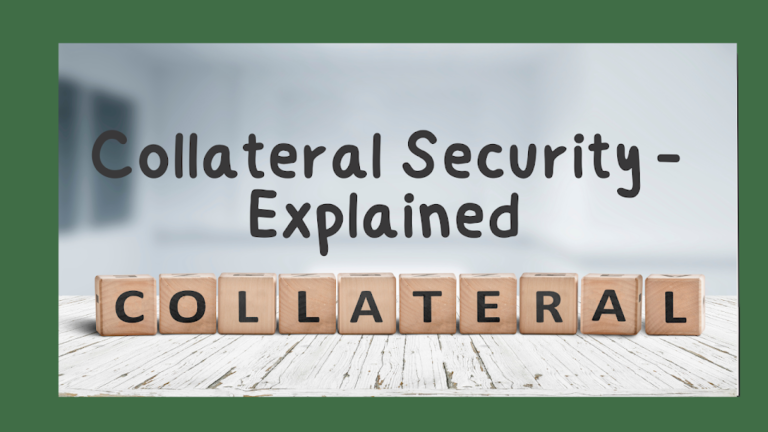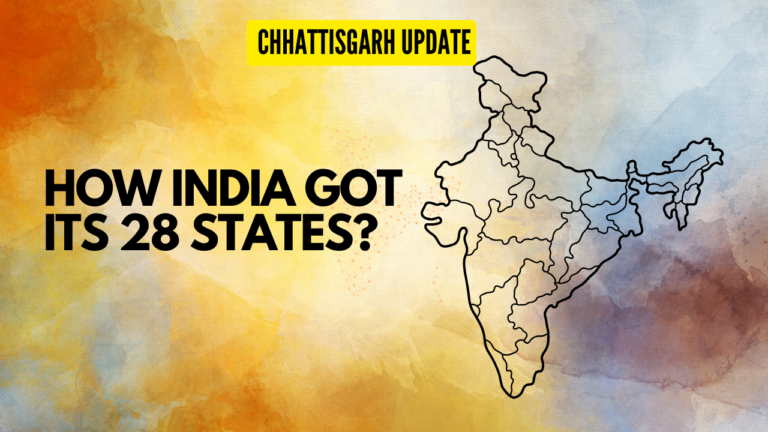In this artical, we are going to talk about the hidden charges of home loans. When we go to take any home loan, there are many hidden charges in it and there are additional charges as well. On which, we often do not pay attention to and when the charges together come in front of us suddenly, So we feel that all of a sudden I had not even planned or budgeted about it.
Now about home loan, related to the process, related to the eligibility or related to the balance transfer, I have made a lot of videos, so if you want to know the basics then watch my videos. In this video, we will mainly see about the hidden charges and in what ways you can negotiate with the bank, to reduce those charges or even eliminate them. So you must stay in this video from beginning to last because maybe you also never paid attention to some charges. So let’s go straight to the blackboard.
So let’s know what are the hidden charges related to the home loan. This is basically, what your Interest cost is, what you pay every month, apart from that, the rest are the hidden charges. In this, I will tell you total 15 charges, that you may have to pay. Out of this, 7 major charges are; major charges means which may have a large amount. Rest 8 are the additional charges. We will also talk about them. First of all, we will see these major charges. In this, first comes your Processing Fees. Processing fees basically covers the marketing and sales cost of the bank. And covers their internal administrative expenses.
Generally, banks sell many of their loans through direct selling agents. So the cost of DSA is covered by the processing fees. And then the internal administrative expenses are also covered by the processing fees. So the processing fees are generally about 0.25% to 1% of the total amount of whatever your home loan is. So suppose that, if your amount is 40 lacs, so your processing fees can be from Rs 10,000 to Rs 20,000. If it is 0.25% then it will cost you Rs 10,000. and it is 1% then it will cost you Rs 20,000. So you have to try that you negotiate for your minimum processing fees.
Then other than this, when you take a home loan so with that there is also legal and technical due diligence of that property. The complete background is checked. Property’s documents are checked, a site inspection is done and the property’s valuation is done. For that, a third-party lawyer is being appointed by the bank and with that, a professional valuer is also there. So their fees also have to be paid separately, which is charged as a Lump sum fee. Many banks include it in the processing fees if they charge 0.5% to 1%, so this legal & due diligence includes in it.
Otherwise, many banks charge it separately, so it can be a lump sum fee of Rs 5,000 to Rs 10,000. So you should also know a little about this, should not be shocked suddenly. Because many times people don’t know about this, this fee is also costed extra. Then there are MODT charges, MODT means Memorandum of Deposit of Title Deed. So a memorandum is signed when you have done your loan agreement. So a memorandum is signed that you have kept a title deed with the bank.
On it, you have to pay the stamp duty, which is around 0.1% to 0.2% of the home loan amount. So it varies in every state but generally, it can be from 0.1% to 0.2%. You have to assume that it can cost you Rs 4,000 to Rs 8,000. If here only talking about the loan of Rs 40 lacs. Then other than this, there is also a big expense of home loan insurance. A lot of banks nowadays sells both loan and insurance by clubbing them.
The premium of insurance is added to your EMI. So if I talk about the example, so assume that you have taken a loan of 40 lacs and your age is 28 years, So around Rs 400, your additional premium will come per month. This will add to your EMI, whatever your EMI will come, you will have to pay additional Rs 400 per month. But the home loan insurance is not mandatory at all.
I have already made a detailed video on this. So how you can avoid the home loan insurance or what is its better alternative? You must see it in this video because I have covered all the important points in this video related to home loan insurance. Let’s move further, here I have written no.3 but it’s actually no.4. Let’s move further, what are the other charges?
So our 5th charge is Pre-payment / Foreclosure charges. If you suppose, get some money, let’s say your loan was a total of 40 lacs, from which you already settle down of let’s say Rs 5 lacs by paying the EMI. Now let’s say from somewhere you get Rs 10 lacs. So you can pay the amount of Rs 10 lacs too. Ans if you subtract Rs 10 lacs then it will remain Rs 25 lacs only. So the amount of Rs 10 lacs, if you prepay it, so on that there are no charges according to RBI guidelines.
If you have the floating interest rate then the pre-payment charges are waived off. Many times, a lot of bank charges the pre-payment penalty of 2%-3%. If you are paying, suppose Rs 10 lacs then 2-3% charge will be levied on it. If your loan is a fixed interest rate loan. Or if you are transferring your loan to some other bank and if you are paying from your sources, then there will be no charges on it. But if you are taking a loan from another bank and you are transferring your loan, so in that case, many banks charge these 2-3% pre-payment charges. So you should also know this, whenever you want to transfer a loan, so you must inquire about these pre-payment penalties.
Then there are the Conversion charges, conversion charges mean, now as I talked to you here that, here many times people transfer their loans, so mainly why do they transfer? because maybe they are getting an existing interest rate of suppose 10% in their banks. And in other banks, they are getting 8.5%. And maybe even your own bank is giving 8.5% to the new customers. Generally, what happens?
They offer the best interest rates. Because of the competition, they have to give the best interest rates. Slowly, as the interest rate keep increasing, they keep on increasing your interest rate. But when the interest rates decrease, they don’t decrease your interest rates. Right. So don’t know, why this happens inside the market? The market is structured like this, but it happens. So for that, banks levy charges here too.
If suppose your current interest rate is going on 10%. And you want that you get interest rate like a new customer as much as 8.5%. Then you have to pay the conversion charges to the bank, it will be 0.5-1% of the outstanding loan amount. Then many times bank charges Switching fees. Switching means if you are having the floating interest rate, now suppose you have got a 10% of floating interest rate. And maybe you are getting a fixed interest rate of 11%. Right. So maybe you think that the 11% interest rate is ok, at least in the coming years, it will be fixed for any years. So that’s why you can also think of switching.
So if you switch from floating to fixed or from fixed if you come to floating. So for that also you have to pay charges, it can be 1-2% of the outstanding amount. So these were all our major charges, where you have to pay in percentages and amounts become quite big. Now let’s talk about some additional charges. Which are generally late payments, check bounce and related to these there are some charges.
These are generally fixed charges. It will cost you from let’s say Rs 250 to Rs 1000 for the different types of charges. For example, late payment charges are levied on you. Suppose you didn’t give your EMI on time. You didn’t pay your EMI on time. So, you would have been charged an interest of 2% per month for the delay time period, Any bank can charge you a minimum amount of Rs 500 to Rs 1,000 for it.
So it will also vary from bank to bank but they always charge the late payment charge. Then suppose if your cheque of EMI bounces or if you have filled ECS, Electronic Clearing System, so if your EMI is automatically deducted from your bank. And for some reason suppose your bank gets blocks or it doesn’t have sufficient balance. And your ECS gets returned, so in that case, also the bank charges lump sum fees. This fee can be also from Rs 250 to Rs 500 per instance basically.
If your one cheque gets bounced then you have to pay from Rs 250 to Rs 500, and for the next time, you have to pay it again. Then if you want to change the loan tenure, let’s say initially you had taken a loan for 15 years. Now you are thinking that I should change it to 20 years. Because I want to decrease the burden of EMI, as I will not be capable of paying that much amount every month. Or maybe you want to change it from 20 years to 15 years or 10 years. Maybe you wish to do the opposite.
Maybe your pay salary has been increased so I can afford more EMI and my loan gets over fast. So for that also a lot of banks charges a lump sum charge. It can be also a fee of Rs 500 to Rs 1,000. Then if you want to swap your repayment mode suppose your payment was being done by let’s say cheque till now. maybe you have given the post-dated cheque now you want to pay electronically, it gets deducted automatically online. For that also, bank can charge you a fixe charges, it will be same as from Rs 250 to Rs 500.
Then if you want to generate a statement of your account. It is also basically needed for your tax purposes, mostly online it is available for free. But if you take a signed copy from the bank then you will have to pay Rs 250 to Rs 500. Let’s move on, if you want to take out your original documents; when you take a home loan, the original documents are submitted to the banks. For that also, you will have to pay a lump sum fee. It is better that you keep copies of the original documents, 1-2 copies or keep their scanned copies.
In today’s date, whatever your original documents you have, you must keep their scanned copies. Because you may need to take out the print at any time. But even then you don’t have copies of original documents, then you can take them out from the bank. And there also bank charges you a lump sum fee. This generally charges you Rs2 per page or they can charge you a lump sum of Rs 1,000. So it can be also charged as a lump sum fee. Then you can also get a list of how many documents of your is submitted at the bank.
You have to also a lump sum fee for it. So the list of original documents, here we are not talking about the copies, here we are only talking about the list that which documents banks have. So this list, suppose if you want to sell the property then this list is required. Or if you want to transfer your loan to another bank, then also this list is required. So you will also get this list for Rs 250 to Rs 500, every bank has different charges, the range is generally this only.
Then the last charge that comes in it is the document retrieval charge. Whenever you finish your loan, at the time of loan closing, your documents will come through courier. Generally, banks have a Central repository, now maybe some banks have their central repository in Bombay, maybe some banks have in Chennai or some banks have in Pune. So wherever they have their central repository, they have to be called original documents from there. Courier charges are collected from you as well, so they will be called in their branch and you can collect them from there. So the bank will charge a lump sum fee for this also, it can cost you from Rs 500 to Rs 1,000 or up to Rs 1,500.
I think I have covered all the additional major charges that a home loan has. So in it, the major charges about which I talked earlier. You have to take care of them; because these are all additional charges whenever you need them you have to pay for it. These are nominal from Rs250, Rs 500 to Rs 1,000. But the major charges that I talked about are calculated in percentages. And you may have to pay a big amount.
I hope you have liked this blog, then please share this artical. If you have any suggestions or you want to suggest any topic for future artical, or if you want to share any thoughts with the community then you can comment it down. I keep sharing finance and investment-related topics every day here on this blog. So if you haven’t subscribed to this channel till now then you can subscribe to it from below, and press the bell icon on your phone so that you can get notifications of my latest articals.





